Football has evolved in many ways as the years have passed, and nowadays it is a very different game from what it used to be. One of the big changes that has happened in football is the importance of intelligence in the modern game. The fast, tactical and dynamic nature of football today means that smart players are usually also the better ones on the pitch. But what makes a player smart? What are those details that make all the difference in top-flight football in the present times?
In this article, we will be taking a look at the importance of reading the game, with players making decisions based on the information they gather, and how this can change players, teams, and games. We will address certain key actions and behaviours that are essential for any top-flight player as well as provide coaching exercises to develop them which can help players improve their game reading skills and intelligence. A tactical analysis of in-game situations from certain players will allow us to show the importance of these aspects by demonstrating good and bad actions performed by them.
How important is reading the game?
Football is a dynamic game full of chaos, in other words, full of unpredictability and just like any other game it can be made easier or harder depending on many factors. In modern-day football, players face the big challenge of having to constantly make decisions in a split second because when they have the ball on their feet, it is only a matter of time until an opponent is closing in on them. The question then becomes, how can players make better decisions in so little time? How do they find a way not only to make a better decision in the moment but also to make that decision one that puts to practice the team’s tactics or strategy?
To answer the previous question, another question: If you were a football player, would you rather have to make decisions without knowing for sure what your teammates are doing or which opponent is pressing you and from where? Or would it be easier to know all that before you even receive the ball and then decide accordingly?
The question is a rhetorical one as it is quite obvious that every player would answer the same way – it is easier to play if you know what’s around you, who is moving and where is that person moving to, and so on. In this way, it becomes easier to make the right decision. But how can we achieve that with so little time available for players to think and execute during, let’s say, a high level Champions League game; how can one read the game better and gather all that information?
The first key action/behaviour crucial for game reading we are going to address is the act of scanning the pitch.
Scanning the pitch
Scanning the pitch is the first and one of the crucial actions that allow a player to be able to read the game, and for obvious reasons. The act of scanning the pitch, of looking around, is what will enable a player to gather the information he needs to decide his next course of action. If a player does not scan the pitch the amount of information he has to make his decision is much smaller and that is something simple to understand. By only looking at what is in my field of vision I will not know, for example, what’s behind me, is there a player coming to press me? Can I turn into space?
Scanning the pitch is not only about looking though, you have to know what to look for and be deliberate when doing it, in other words, you can’t look just for the sake of it. When you look around you you should be looking for the specific information you need in a given moment, and that can be a run of a teammate, a space to move into, a run of an opponent and many other things.
Dr Geir Jordet, a Norwegian professor of psychology wrote his Master’s thesis and PhD on the role of vision, perception and anticipation in elite-level performance. He breaks down the key factors of decision-making in football into three segments: the first is visual perception, which he describes as the ability to take in and interpret information; the second is visual exploratory behaviour, or the ability to actively search and scan to collect information; the third is anticipation, or the ability to see what is about to happen. His study looked into the search frequency of 64 players over 118 games, covering 1,279 game situations and had the aim of discovering the extent to which visual exploratory behaviour or “pitch scanning” frequency influences a player’s passing accuracy. His initial findings immediately pointed to a big influence of search frequency in passing accuracy; players with a low search frequency averaged a 64% passing accuracy, players with a medium search frequency averaged 68% and the players with a high search frequency averaged a much higher 81% passing accuracy.
He then repeated the same study but with a slight change, this time he only looked at forward passes and the research pool was reduced to 55 players. Again, players with a low search frequency had a low passing accuracy at 41%, players with a medium search frequency a slightly better 56% passing accuracy and finally, players with a high search frequency had a much higher 75% passing accuracy. Jordet attempted the study one last time, this time only taking into account forward passes completed in the opposition half, and the results were very similar to the previous ones. Players with a low search frequency had a low passing accuracy of 44%, followed by the players with medium search frequency (55%) and, miles away from the others, the players with a high search frequency displayed a 77% passing accuracy.
A typical and recurring situation that is good to demonstrate the importance of scanning the pitch is the moment before a player receives a pass, if the player scans his surroundings he can identify the positions of his teammates and opponents as well as see if he is going to be pressed or not. In the image below we can see Kevin de Bruyne scanning the pitch behind him before he receives the ball, identifying that he has pressure behind him from Ferland Mendy as well as from Eden Hazard, de Bruyne knows that he has to play the ball back to Kyle Walker as it was not safe to turn and play forward.

Pitch scanning is important in many other moments of the game as well, for example, even when a player is not going to receive a pass, scanning his surroundings is very important in order for him to adjust his positioning and recognise space he can move into. Another use of pitch scanning can be found in defending, when running back or defending a cross, scanning what’s around can help defenders realise if someone is making a run on their blindside for example. In an image taken from the same game as the one above we can see Aymeric Laporte scanning the pitch around and behind him while running back to control Manchester City‘s defensive line’s depth and that enables him to keep track of Benzema’s run on his blind side.
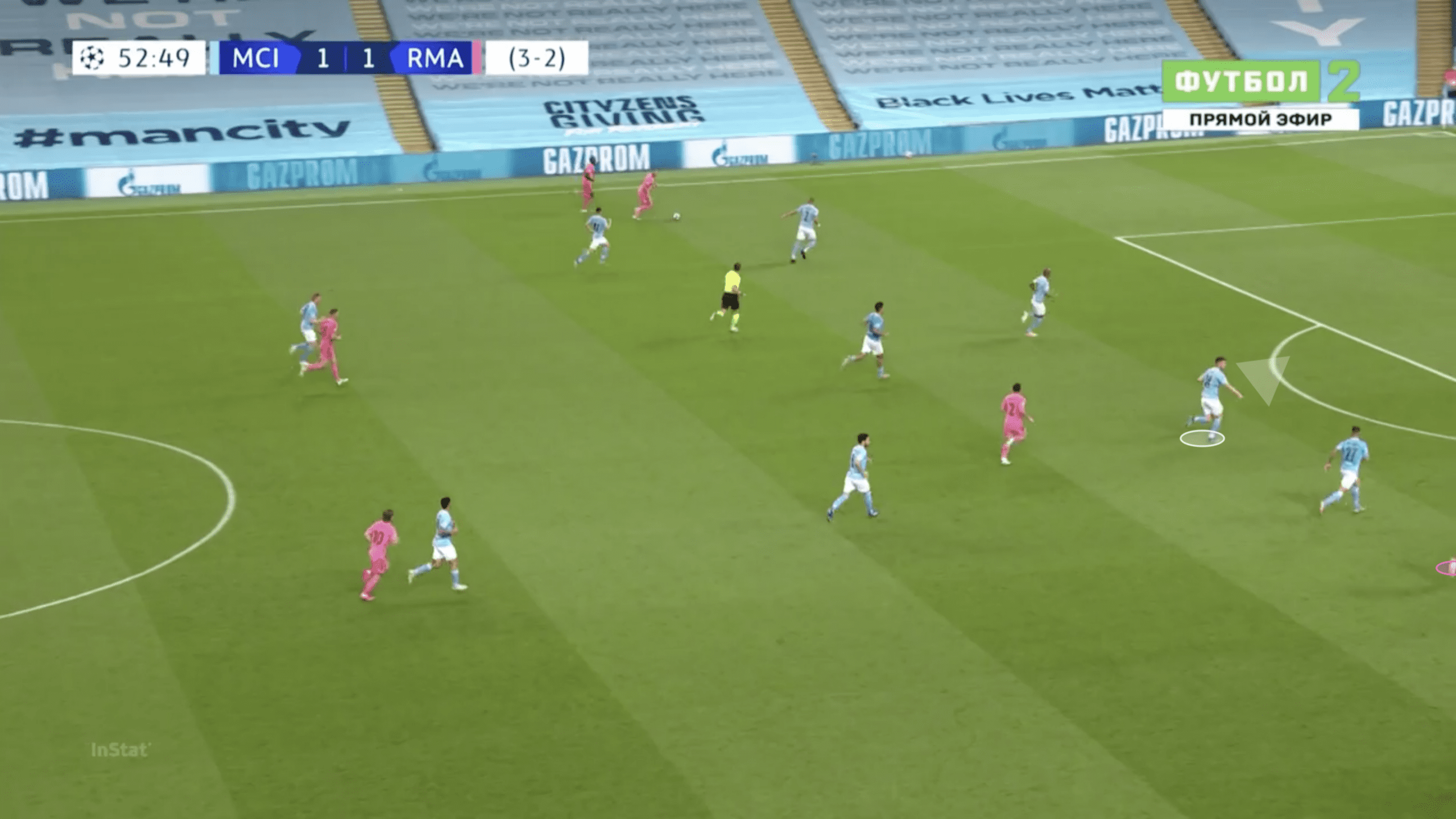
The importance of scanning the pitch in every moment of the game should be by now recognisable, but what comes after it? Well, after a player has scanned his surroundings in order to obtain information about the occurrences of the game, he then has to be able to interpret that information and act accordingly, in other words, after scanning the pitch the players are now in possession of the necessary information to make a decision on their next move.
Body orientation
The next aspect related to reading the game we are going to address is body orientation. Body orientation is crucial in high-level football as it can change a whole play and, as a consequence, a whole game. Body orientation is also deeply connected to scanning the pitch, in fact, one of the main things players should do with the information gathered by scanning the pitch is to correct their body orientation. The way we are facing, and the position of our feet and body, are two of the most important factors to take into account as they affect our visual field, our ability to turn, to accelerate in different directions etc. If we have both of our feet parallel to each other our visual field is smaller, we can’t turn and accelerate both ways as fast and those are little details that can have a huge impact in a football game of the highest level.
The sequence of image below is a good example of the importance of body orientation as well as its relation with pitch scanning. Toni Kroos scans his back and identifies the pressure coming from Sterling, as a result, he changes his body orientation so each one of his feet are facing different sides of the pitch. What this body orientation allows Toni Kroos to do is to be able to see both the ball and the player who is pressing him, as well as gives him the angle to be able to play a forward pass into the feet of a teammate.
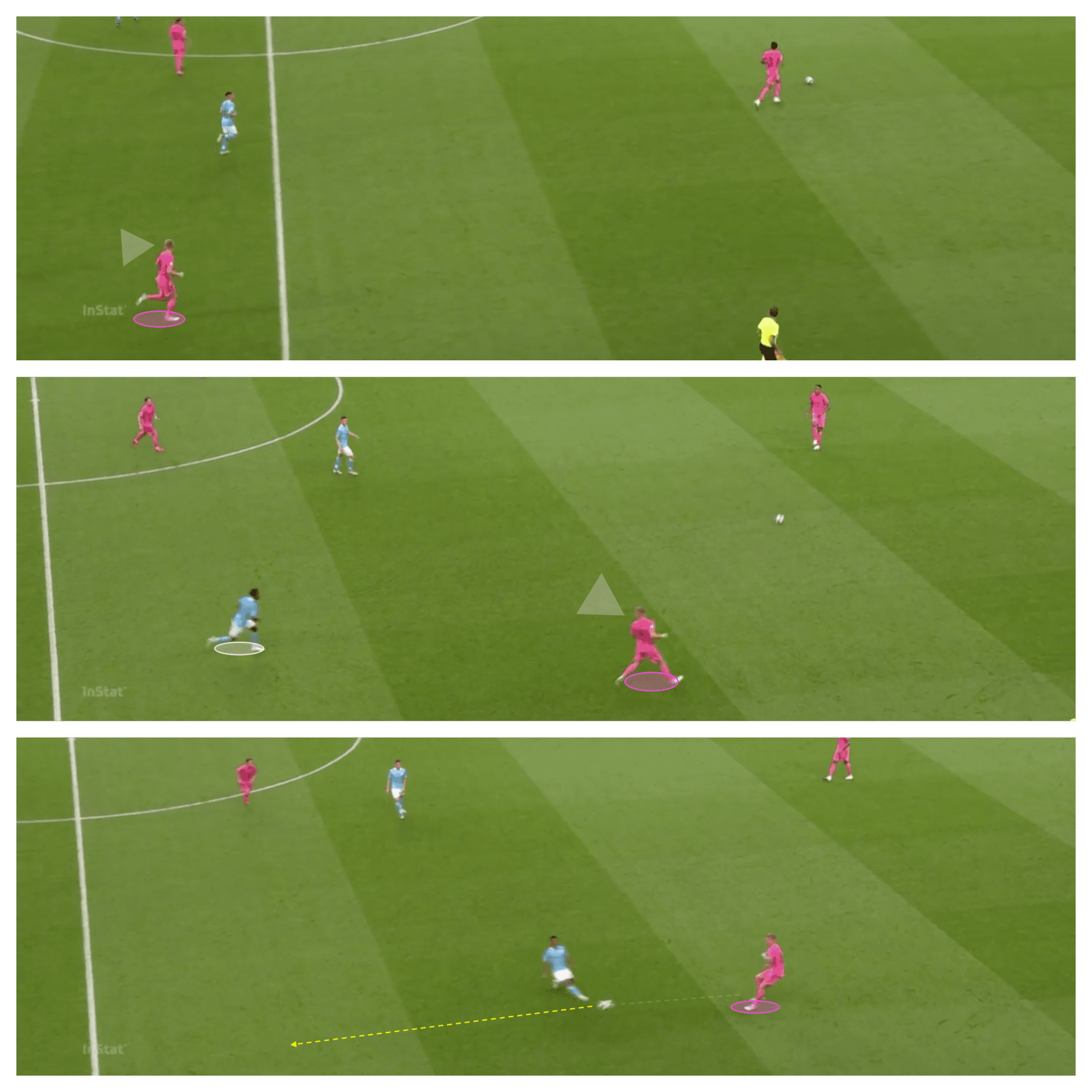
In the example above, if Kroos had kept the same body orientation he had on the first picture instead of opening up his body so he can see both sides of the pitch, he would most likely be forced to play the ball back and, if he tried to turn without checking over his shoulder, he would most likely lose the ball to Sterling’s press.
One area/moment of the game, besides the moment before receiving the ball, where body orientation is crucial is when a player is defending. Having both feet parallel and pointing to the same side of the field will only allow a player to see what’s in front of him, at the same time, it is not the optimal position to be if the need to accelerate in a 1vs1 situation comes up. When defending, whether it is an active defending scenario like a 1vs1 situation or passive defending scenario like maintaining the correct positioning along the backline, adopting the correct body orientation can be the difference between being able to track a runner in behind the defensive line or being too late and letting the attacker have a 1vs1 situation against the goalkeeper.
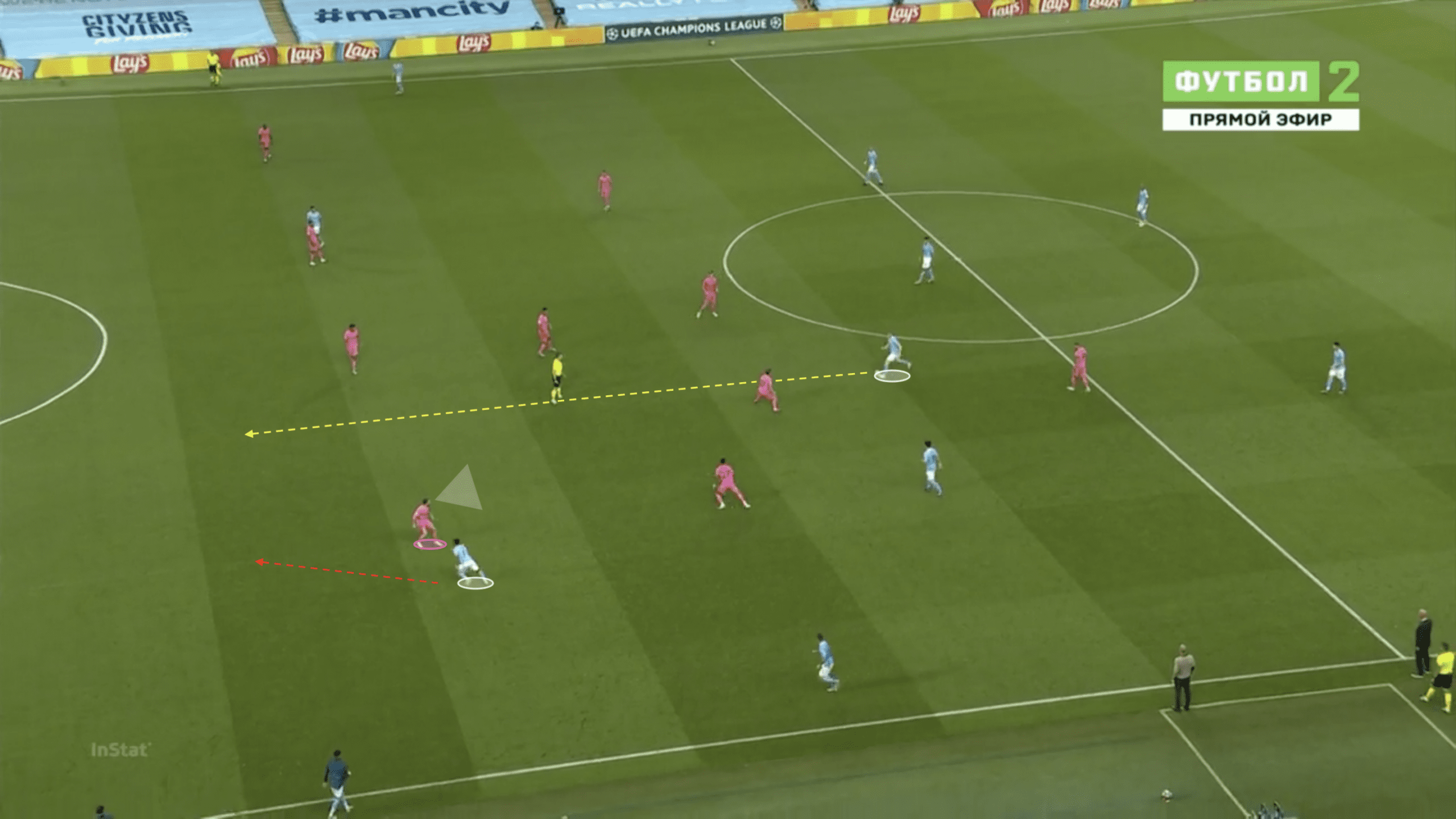
In the image above we can see the moment immediately before Kevin de Bruyne plays a through pass to Raheem Sterling in behind Real Madrid’s defensive line. Notice how Dani Carvajal is looking only at the ball and has his feet one in front of the other. This body shape and orientation don’t allow Carvajal to quickly accelerate to keep up with Sterling’s run because he can’t rotate his body to start running quickly enough and having a bent knee in that position doesn’t help either. The play ends up with Sterling going 1vs1 with the goalkeeper and forcing Thibaut Courtois to make a good save.
Having established the importance of body orientation for various different moments of the game, and how it can influence both attacking and defensive scenarios we will now take a look at one last aspect related to the two that were already addressed and that is the first touch.
First Touch
Following our guideline, after a player scans the pitch to gather the necessary information he then has to decide what he wants to do, preferably before he receives the ball. Having made that decision we saw how important it is to have the right body orientation in order to be able to receive the ball into free space, or to track a player’s run. Using the moment before one player receives the ball as an example again, there is one last factor that is deeply connected to the previous two and that is the first touch.
A player’s first touch is a very important tool to play progressive football as well as to be able to manoeuvre in tight spaces. In the modern game, the difference between a good and a bad first touch can be the difference between being able to play forward and break the opposition’s press or being forced to play backwards. When a player scans the pitch and decides what he is going to when he receives the ball, the rich body orientation and the right first touch are what enables him to overcome pressure and find space to move into. Let’s see an example below.
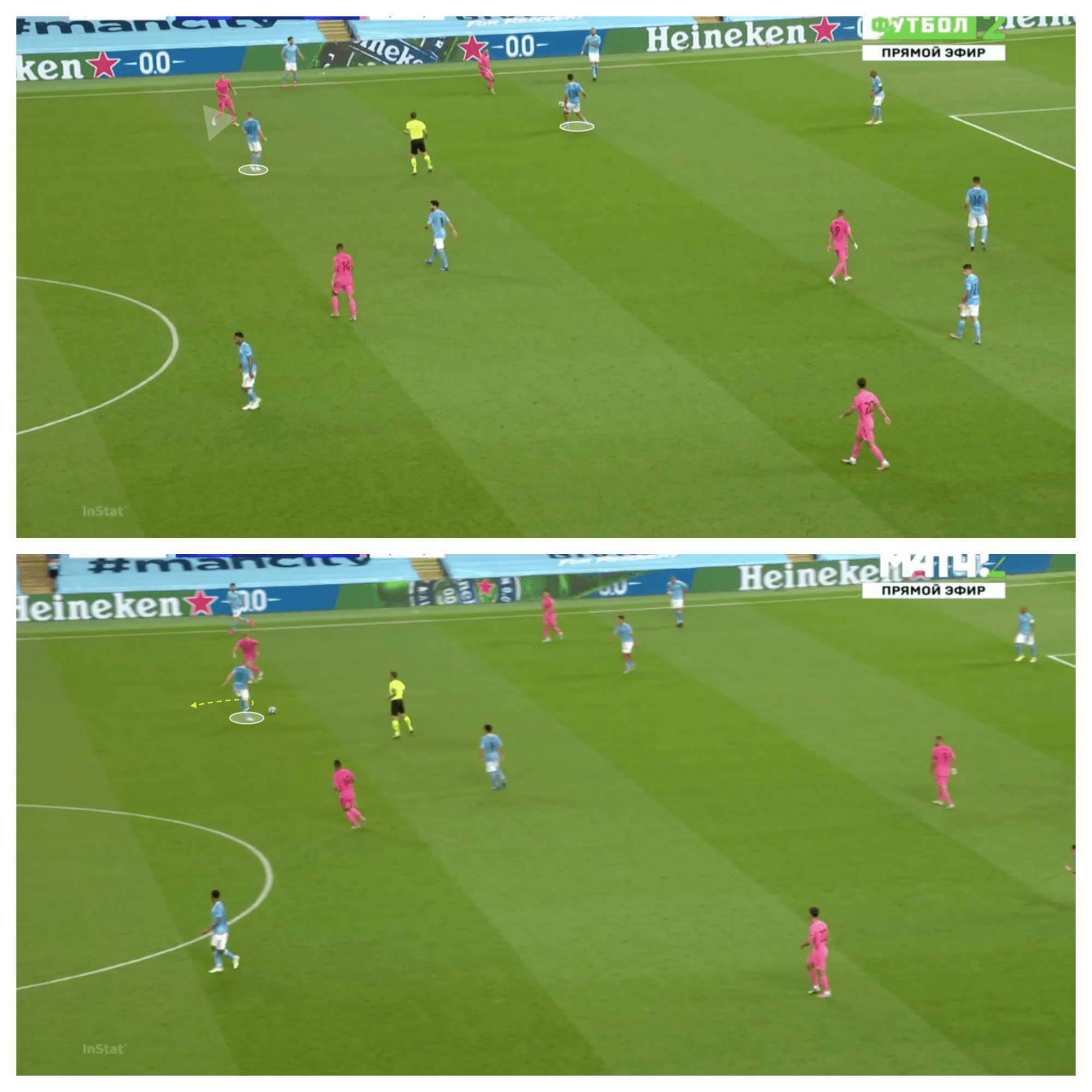
In the sequence of images above we can see Kevin de Bruyne scanning his back and identifying free space behind him even before Rodri receives the pass from Kyle Walker. Knowing he can turn, De Bruyne receives the ball on the half-turn adjusting his body orientation and using his first touch to turn and play progressively. If he hadn’t checked his back he wouldn’t have received the ball this way, and, even if he had checked his back if he had received the ball without doing so on the half-turn, he would most likely be forced to play a back pass instead of progressing the ball forward.
How can we coach all this?
Having seen the importance that reading the game has in modern-day football, and how scanning the pitch, adopting the correct body orientation and taking good first touches are crucial aspects to take advantage of the information gathered, we will now shift our focus to a coaching exercise that attempts to help players to improve in all these aspects.
The exercise is represented in the following image.
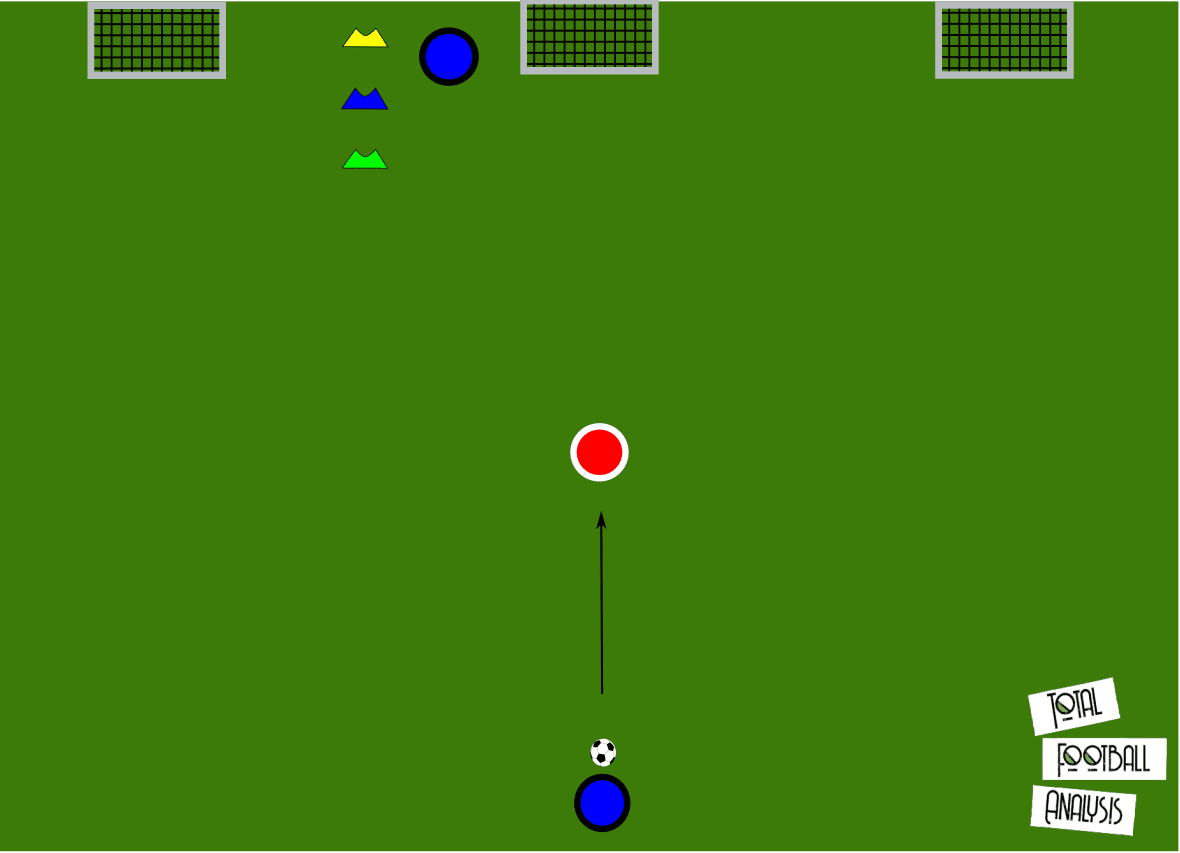
The blue dots are coaches and the red dot is a player, this exercise can be done with one individual player or with a rotation between a relatively small number of players. Each player works for 1:30 minutes.
The colours of the markers next to one of the coaches are associated with the three mini-goals, one will be blue, the other will be yellow and the third will be green. The coach with the ball plays a pass to the player that is facing him and, before receiving the ball, the player must check his back so he can see which colour of the markers the second coach is raising in his hand. The player then needs to adjust his body orientation and take the first touch so he faces the goal to which he must pass the ball to. Only two touches are allowed, this way the player’s first touch and body orientation must be correct so he can pass the ball into the mini-goal properly.
This exercise allows the player to practice all three aspects mentioned in this article and it can be altered to mimic in-game situations even further by adding pressure on the player or another player trying to defend the goals for example.
Conclusion
In this article we were able to demonstrate the importance of reading the game in top-flight football, the three main aspects that were addressed, pitch scanning, body orientation, and first touch are all details that are connected between them and that contribute for a player to have better game reading skills and also to make better decisions.
An analysis of real-game situations allowed us to see what top players do, and how players that are amongst the best and the smartest in the world, like Kevin de Bruyne, are the ones that scan the pitch the most, control their body orientation and first touch, ultimately making better decisions and playing better.
These aspects, and others related to reading and understanding the game, are details that should be introduced and practised with young players so that they become natural and a part of their game from early ages. The coaching exercise provided is one of many different ways these attributes can be worked on, and it can be adjusted to meet the needs of a coaches’ tactics or style of play.

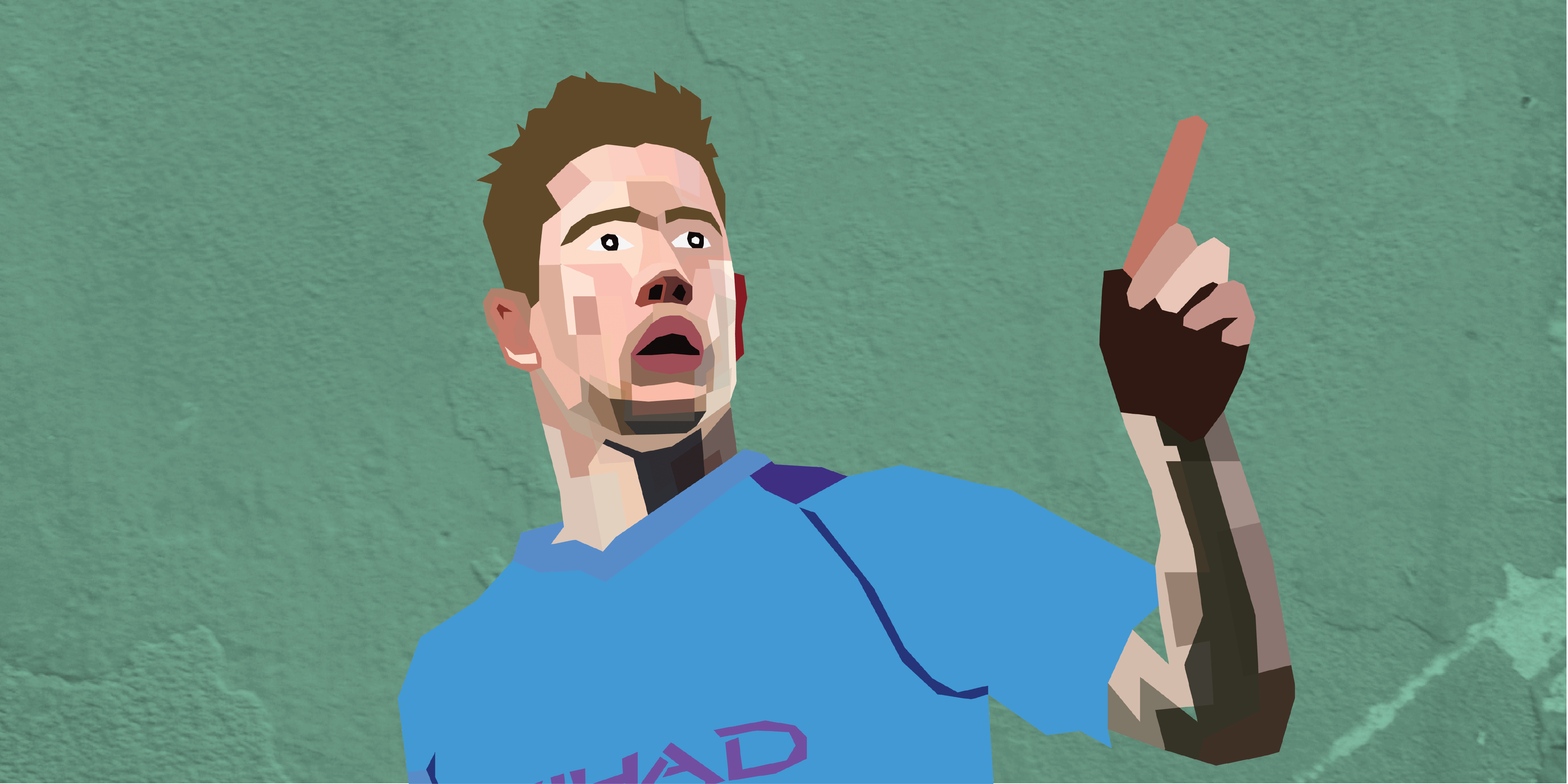




Comments